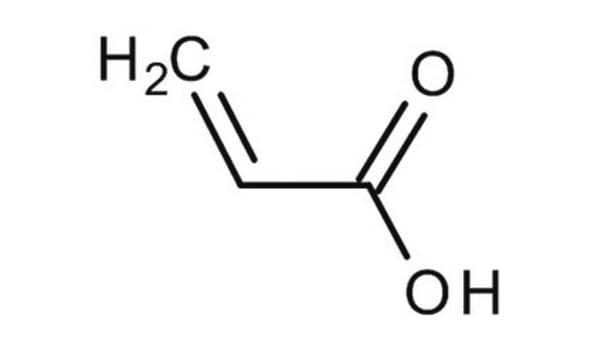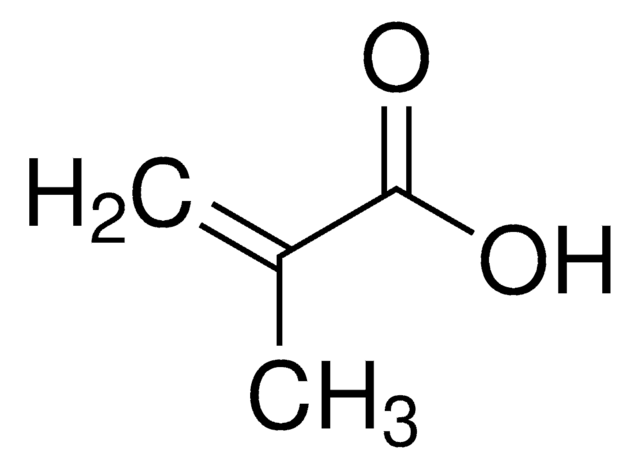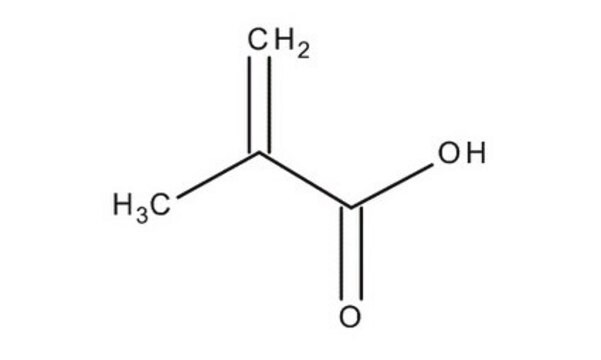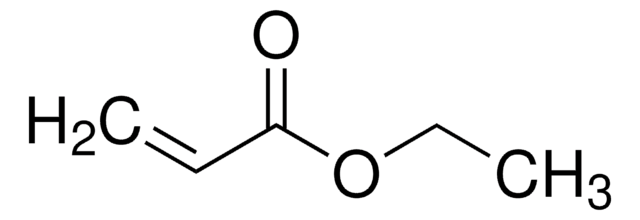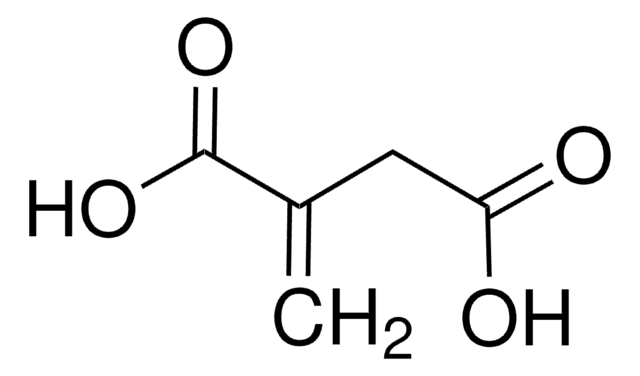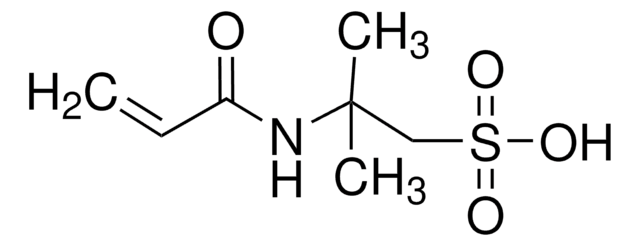추천 제품
Grade
anhydrous
vapor density
2.5 (vs air)
vapor pressure
4 mmHg ( 20 °C)
분석
99%
양식
liquid
autoignition temp.
744 °F
포함
200 ppm MEHQ as inhibitor
expl. lim.
13.7 %
bp
139 °C (lit.)
mp
13 °C (lit.)
density
1.051 g/mL at 25 °C (lit.)
SMILES string
OC(=O)C=C
InChI
1S/C3H4O2/c1-2-3(4)5/h2H,1H2,(H,4,5)
InChI key
NIXOWILDQLNWCW-UHFFFAOYSA-N
유사한 제품을 찾으십니까? 방문 제품 비교 안내
일반 설명
애플리케이션
Acrylic acid can also be used as:
- A key component in the preparation of copolymer binder, which helps to optimize the performance of lithium-ion batteries.
- A surface modifier for the carbon nanotubes with poly(acrylic acid) in order to improve adhesion and dispersion of the nanotubes in the oxide semiconductor matrix for thin-film transistor applications.
- A reactive monomer for the surface modification of polydimethylsiloxane (PDMS)through a simultaneous polymerization process with ethylene glycol dimethacrylate. Modified PDMS potentially applied in new applications fields such as microfluidics or biomedical devices.
- A precursor for the synthesis of cashew gum/acrylic acid nanoparticles via the copolymerization process. The use of acrylic acid in the synthesis is to introduce hydrophilic functional groups into the cashew gum backbone, thereby improving its solubility in water and increasing its compatibility with other hydrophilic materials.
신호어
Danger
유해 및 위험 성명서
Hazard Classifications
Acute Tox. 4 Dermal - Acute Tox. 4 Inhalation - Acute Tox. 4 Oral - Aquatic Acute 1 - Aquatic Chronic 2 - Eye Dam. 1 - Flam. Liq. 3 - Skin Corr. 1A - STOT SE 3
표적 기관
Respiratory system
Storage Class Code
3 - Flammable liquids
WGK
WGK 2
Flash Point (°F)
119.3 °F - closed cup
Flash Point (°C)
48.5 °C - closed cup
개인 보호 장비
Faceshields, Gloves, Goggles, type ABEK (EN14387) respirator filter
이미 열람한 고객
문서
RAFT (Reversible Addition Fragmentation chain Transfer) polymerization is a reversible deactivation radical polymerization (RDRP) and one of the more versatile methods for providing living characteristics to radical polymerization.
By altering the physicochemical properties, smart or intelligent drug delivery systems can be designed to deliver therapeutic molecules on-demand. Learn more about the application of stimuli-responsive materials in drug delivery.
Innovation in dental restorative materials is driven by the need for biocompatible and natural-appearing restoration alternatives. Conventional dental materials like amalgam and composite resins have inherent disadvantages.
프로토콜
HPLC Analysis of Acrylamide and Acrylic Acid on Discovery® HS F5
Global Trade Item Number
| SKU | GTIN |
|---|---|
| 147230-100G | 4061837399060 |
| 147230-18KG | 4061838737274 |
| 147230-1L | |
| 147230-204KG | |
| 147230-50KG | |
| 147230-5ML | |
| 147230-25ML | |
| 147230-3KG | 4061838737281 |
| 147230-500G | 4061837399091 |
| 147230-500ML | |
| 147230-5G | 4061837399107 |
| 147230-2.5L | 4061837403675 |
자사의 과학자팀은 생명 과학, 재료 과학, 화학 합성, 크로마토그래피, 분석 및 기타 많은 영역을 포함한 모든 과학 분야에 경험이 있습니다..
고객지원팀으로 연락바랍니다.